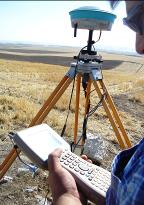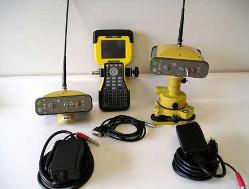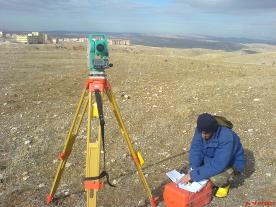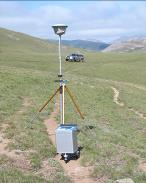|
Gravity measurements detect changes in the earth's gravitational field caused by local changes in the density of the soil and rock or engineered structures. Sketch of gravity survey over cavity. Uses:Standard gravity measurements are primarily applied to characterizing geologic structure using widely spaced stations (100's to 1,000's of feet apart). Microgravity measurements can be used to characterize detailed localized geologic conditions (such as bedrock channels, caves, and abandoned tunnels and mines) usually within the upper few 100 feet. Microgravity uses closely spaced stations (a few feet to about 50 feet) and a microgravimeter (capable of reading to a few microgals). Advantages:Provides a means to characterize conditions in geologic and cultural environments, where other geophysical methods may fail; Does not require intrusive ground contact; Data can be interpreted to provide estimates of depth size and the nature of the anomaly; Can be used inside buildings and structures. Disadvantages:Station measurements only; Instruments carried by hand only; Requires base station for drift corrections; Requires accurate elevation measurements; The process of making microgravity measurements is a relatively slow and tedious in the field and requires extensive processing and corrections; Susceptible to cultural and natural vibrations. |



|
CG-5 Autograv Gravity Meter The Scintrex CG-5 maximizes your productivity delivering superior data repeatability in rough field terrain. Station positions are measured with the integrated GPS capability. Internal GPS and precise clock for X-Y positions and earth tide corrections External GPS input for Z-position and altitude corrections Real time free air and Bouguer corrections Online near zone terrain corrections R/F On Off |








|
Home |

|
About Us |

|
Contact Us |

|
Project |

|
Referances |

|
Certificate |
|
Back Survey |

|
Equipments |


|
GEOLOGIST'S CONCERN: |
GEOPHYSICIST THINKS IN TERMS OF: |
APPLICABLE GEOPHYSICAL METHOD: |
|
permeability, porosity |
• resistivity • density |
Resistivity, Seismic, Gravity |
|
foliation, bedding |
• anisotropy |
Resistivity, Seismic, CSAMT, IP, CR |
|
faults and fractures |
• abrupt changes in resistivity and density |
Resistivity, Seismic, Gravity, Magnetics, CSAMT, TEM, FEM |
|
Metallic luster minerals |
|
|